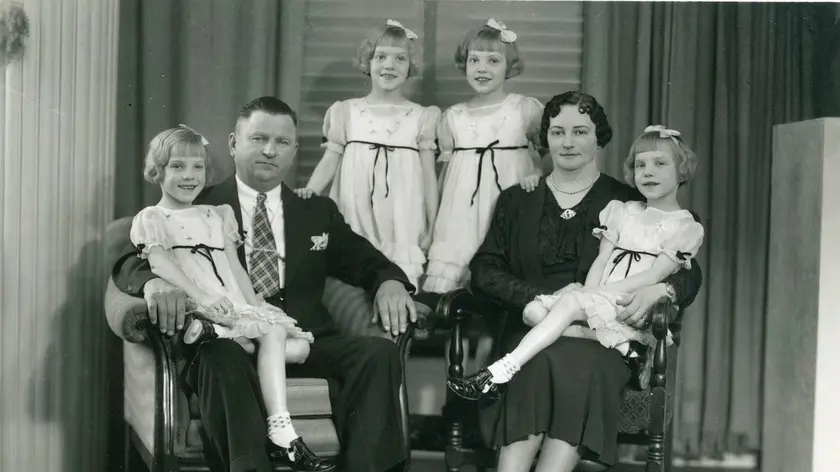T4K3.news
Morlok Quads Case Revisited
A historical look at the Morlok quads and the years of manipulation, fame, and medical scrutiny that followed their birth.

A historical look at the Morlok quads and the years of manipulation, fame, and medical scrutiny that followed their birth.
Morlok Quads Legacy of Control and Tragedy in Lansing
Born in Lansing, Michigan in 1930, the Morlok quads Edna, Wilma, Sarah and Helen came to public attention as the world’s first identified identical quadruplets. Their father, Carl Morlok, a white supremacist who later served as a local constable, turned their birth into a show and built a small enterprise around the girls’ fame. The family home at 1023 East Saginaw Street became a site of constant visitors and scrutiny, while Carl imposed a strict regime meant to safeguard what he called their purity. The history around their early life reads like a cautionary tale about fame, power, and exploitation in public life.
As the sisters grew, the show’s darker side emerged. Carl authored a list of 20 rules that banned trousers, holidays, friends, parties, and even birthday celebrations, and he watched over their daily lives with as much weapon as parent’s polish. The girls’ mental health later deteriorated, and by their mid-twenties they faced schizophrenia, a condition that drew attention from researchers at the National Institute of Mental Health. The Morloks were studied as part of a broader conversation about heredity and environment in schizophrenia, culminating in Dr David Rosenthal’s 1963 Genain Quadruplets work. Sarah Morlok ultimately lived a comparatively quiet life after her father’s death, while the others spent years in institutions or faded from public memory.
Key Takeaways
"We felt like tin soldiers marching to my father's rules."
Sarah Morlok recalling childhood under her father's regime
"If my grandfather Carl hadn't died I would not be here today."
David Cotton reflecting on family history and survival
"The media portrayed us as cheerful white American girlhood and during the war as fighters of fascism."
Dr Farley on public portrayal of the Morloks
"He was clearly a devil who exerted such extreme control over his daughters."
David Cotton describing his grandfather's influence
The Morlok story exposes how sensational birth narratives can mask real harm. Media hunger for novelty often framed the quads as symbols of wholesome American girlhood, even as their father inflicted strict control and used them for financial gain. The case helped fuel early debates about the limits of medical research on vulnerable groups, particularly the use of minors in long-term studies. It also illustrates how trauma can echo across generations, influencing memoirs and family narratives long after the events themselves.
Highlights
- We felt like tin soldiers marching to my father's rules.
- If my grandfather Carl hadn't died I would not be here today.
- The media portrayed us as cheerful white American girlhood during the war as fighters of fascism.
- He was clearly a devil who exerted such extreme control over his daughters.
Sensitive historical abuse and research concerns
This piece covers alleged family abuse, coercive control, and ethically fraught medical studies conducted on underage individuals. It could provoke backlash from readers and conversations about sensationalism versus responsible reporting.
History reminds us to protect the vulnerable and question how fame is managed.
Enjoyed this? Let your friends know!
Related News

Smollett documentary spark debates

Smollett case revisited in Netflix documentary

Shannon Matthews case revisited after 2008 hoax and new documentary

New Documentary Explores Yogurt Shop Murders

Smollett case revisited

New documentary addresses Jodi Huisentruit's disappearance

Supreme Court Faces Test on same-sex marriage rights

Perry documentary final days and ketamine case advances
